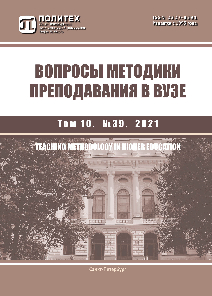Comparative analysis of methods of teaching Spanish in a multilingual environment
The main purpose of this study was to compare two teaching methods, multilingual and English as Medium of Instruction (EMI), and to identify which educational model leads to higher student engagement and Spanish communicative competence outcomes. Our study involved two groups of third year undergraduate students of Peter the Great St. Petersburg Polytechnic University. In the experimental group, a multilingual method was implemented. In the control group, the EMI method was used. To measure the communicative competence of the Spanish language, the results of the final examination in Spanish (listening, reading, writing, speaking) were taken. Student engagement levels were measured using the three most common dimensions identified by researchers (behavioral, emotional, and cognitive engagement). Paired samples of Student's t-tests were performed to analyze descriptive statistics. According to the results of this study, all the advanced hypotheses were confirmed, as a result of which it was revealed that the students of both groups (experimental and control) improved their knowledge of the Spanish language. However, it is important to note that students studying in the multilingual group showed higher results in reading and speaking. Based on the results of the engagement, it can be concluded that students in the experimental group showed a higher level of emotional and cognitive engagement, which explains the results in Spanish language proficiency.



